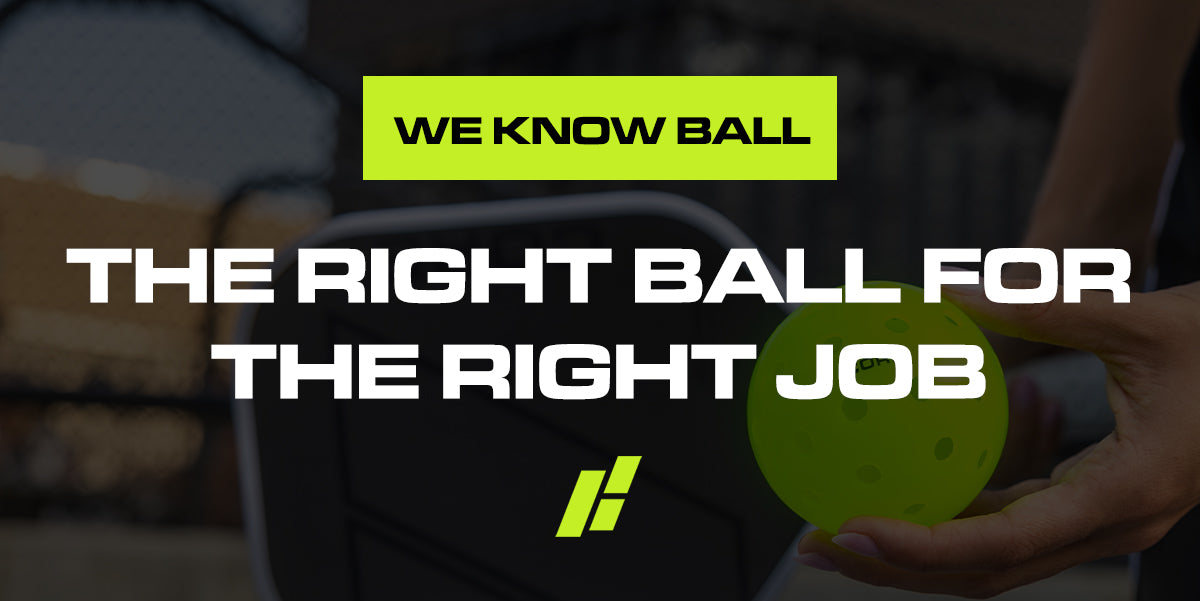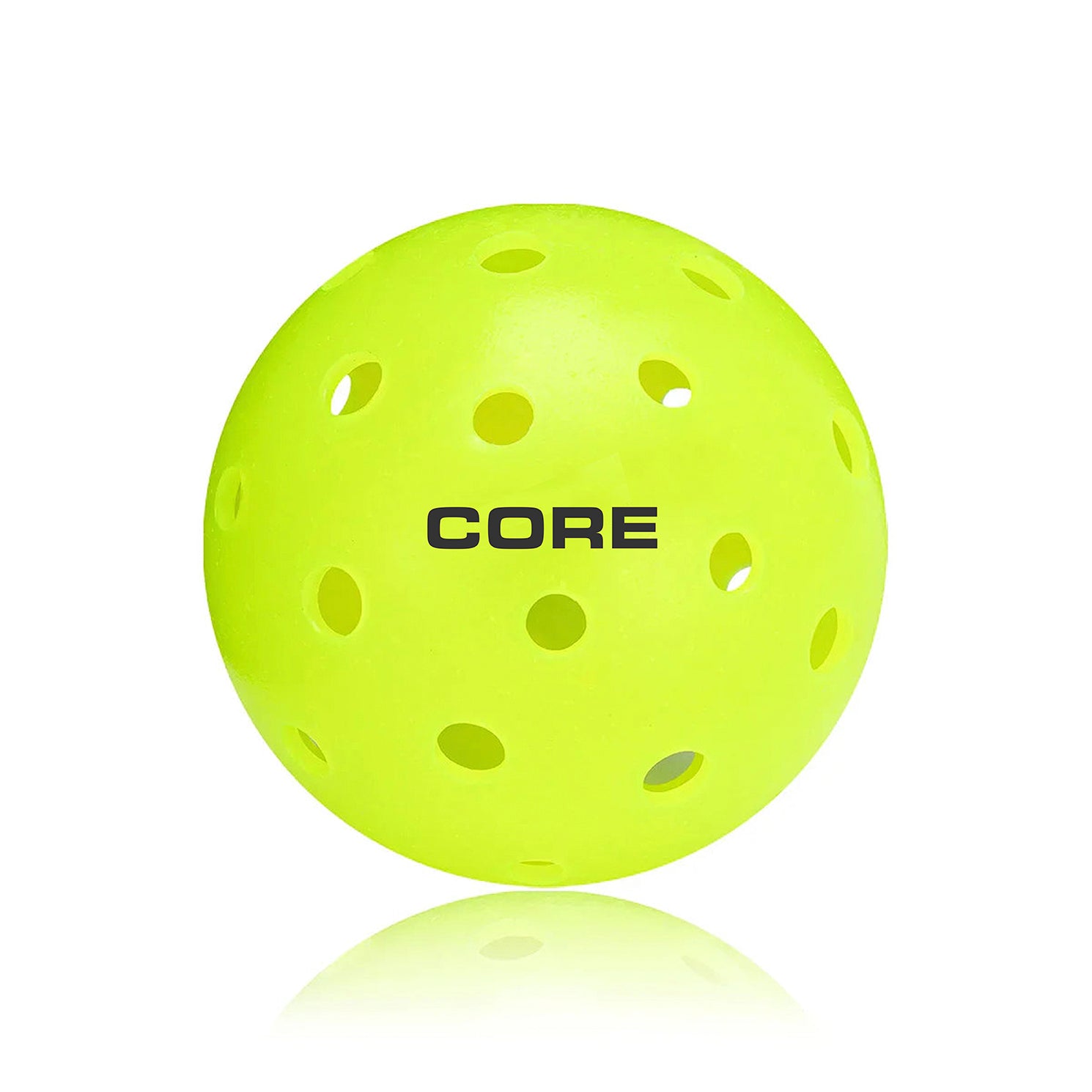Indoor or outdoor pickleballs? This popular designation on most pickleball packaging is actually quite misleading and often leads to newer players buying the wrong ball. Here's what to remember when choosing your pickleballs.
When do I use an outdoor pickleball vs an indoor pickleball?
Forget outdoor vs indoor -- it's all about the court surface. If you're playing on a tennis-like asphalt surface, use an "outdoor" 40-hole ball (yes, even if you're inside). If you're playing on an indoor basketball surface or other smooth surface, play with an "indoor" 26-hole ball.
Can I use an outdoor pickleball indoors?
Yes, oftentimes an "outdoor" ball is the right ball for the job both outdoors and indoors. That's because most indoor pickleball centers now use the asphalt composite surfaces used for tennis courts. If you're on a tennis court-like surface, an "outdoor" ball is your play regardless if the sun or a roof is over your head.
When should I use an indoor pickleball?
Indoor pickleballs should only be used for smooth surfaces such as indoor hard wood basketball courts and tile surfaces. Indoor pickleballs are softer and have fewer holes than outdoor pickleballs, which means they move slower and don't spin as much. A slower pace is important to counteract the fast, smooth surface of an indoor basketball court.
Are outdoor pickleballs or indoor pickleballs more popular?
Outdoor 40-hole pickleballs are much more common because they're designed for use on asphalt composite surfaces such as tennis courts (whether they're outside or indoors). Indoor 26-hole pickleballs are only used on indoor alternative surfaces such as an indoor hardwood basketball court.
What are the difference between outdoor and indoor pickleballs?
Outdoor pickleballs are made of hard plastic and have 40 small holes. They are designed to fly quickly and spin easily, and are designed for slower court surfaces such as the popular asphalt composite surface found on tennis courts. Indoor pickleballs are softer and have 26 larger holes. They are designed for "fast" court surfaces, such as indoor basketball courts, because they fly slower, spin less, and bounce lower than outdoor balls.
Here's The Rule Of Thumb
- Tennis court surface = outdoor pickleball (most common)
- Smooth surface = indoor pickleball (less common)





